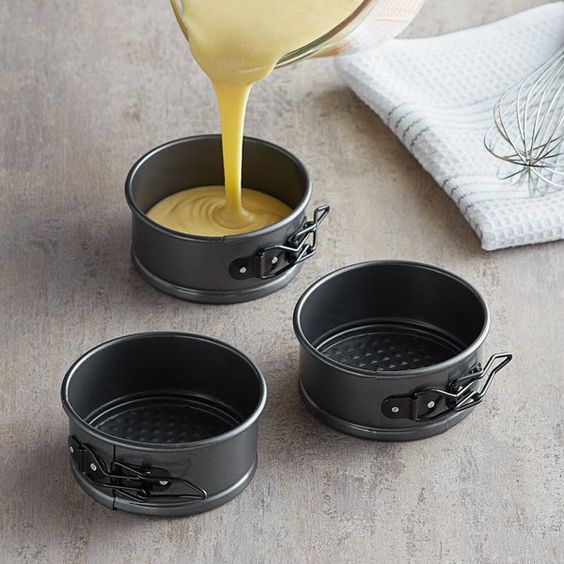Whether you’re an experienced baker or just starting out, the type of cake pan you use can significantly impact your baking results. From the material and shape to the size and depth, every aspect of your cake pan plays a role in the final outcome of your delicious creations. In this guide, we’ll explore the different types of cake pans, their uses, and tips on how to choose the right one for your baking needs.
Types of Cake Pans
Round Cake Pans
Uses: Ideal for classic layer cakes, birthday cakes, and sponge cakes.
Sizes: Common sizes range from 6 inches to 12 inches in diameter.
Tips: Ensure uniformity by using pans of the same size for multi-layered cakes. Non-stick and aluminum varieties are popular choices.
Square and Rectangular Cake Pans
Uses: Perfect for brownies, sheet cakes, and bar cookies.
Sizes: Typical sizes include 8×8 inches, 9×9 inches, and 9×13 inches.
Tips: Adjust baking times when switching between different sizes. These pans are great for serving large groups.
Bundt Pans
Uses: Designed for bundt cakes, pound cakes, and other dense cakes.
Sizes: Available in various capacities, typically around 10 to 12 cups.
Tips: Grease the pan thoroughly to ensure the intricate designs come out cleanly. Choose heavy-duty pans for even baking.
Loaf Pans
Uses: Commonly used for bread, pound cakes, and meatloaf.
Sizes: Standard sizes are 8.5×4.5 inches and 9×5 inches.
Tips: Line the pan with parchment paper for easy removal. Use glass or ceramic pans for even heat distribution.
Springform Pans
Uses: Ideal for cheesecakes, tortes, and delicate cakes.
Sizes: Typically range from 6 inches to 10 inches in diameter.
Tips: Ensure the latch is secure to prevent leaks. Wrap the bottom with aluminum foil when baking in a water bath.
Mini and Specialty Pans
Uses: Perfect for individual servings, cupcakes, and novelty shapes.
Sizes: Vary widely, including mini cupcakes, tartlet pans, and novelty shapes like hearts and stars.
Tips: Adjust baking times for smaller pans. Great for themed parties and special occasions.
Material Matters: What Your Pan is Made Of
Aluminum: Excellent heat conductor, lightweight, and affordable. Ideal for even baking and browning.
Non-stick: Easy release and cleanup, but be cautious with metal utensils to avoid scratching the surface.
Silicone: Flexible and non-stick, great for intricate designs. Requires a sturdy baking sheet underneath for stability.
Glass: Retains heat well, suitable for consistent baking. Perfect for visually monitoring browning.
Ceramic: Attractive and durable, often used for serving straight from the oven. Even heat distribution but can be heavy.
Tips for Choosing the Right Cake Pan
Recipe Requirements: Always check your recipe for specific pan recommendations. Using the correct size and shape ensures the best results.
Even Heating: Choose pans that provide even heat distribution to avoid hot spots and uneven baking.
Depth Matters: Deeper pans may require longer baking times. Be mindful of filling pans only to the recommended level to prevent overflow.
Ease of Use: Consider non-stick options or silicone pans for easy release. Springform pans are great for delicate bakes.
Storage and Maintenance: Ensure you have enough storage space for your pans. Some materials require specific care, like hand washing for non-stick surfaces.
Caring for Your Cake Pans
Cleaning: Avoid abrasive cleaners and scouring pads. Opt for mild detergents and soft sponges.
Storage: Stack pans carefully to avoid scratching. Use pan protectors or parchment paper between stacked pans.
Maintenance: Regularly inspect pans for signs of wear and tear. Replace any pans with damaged surfaces to maintain baking quality.
